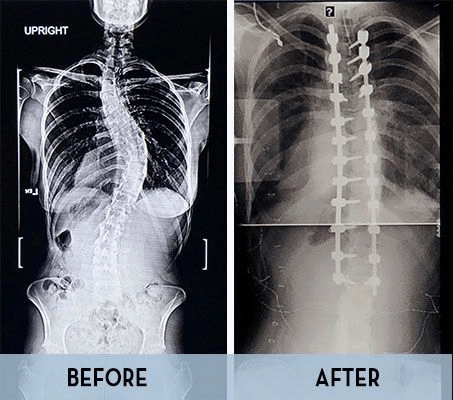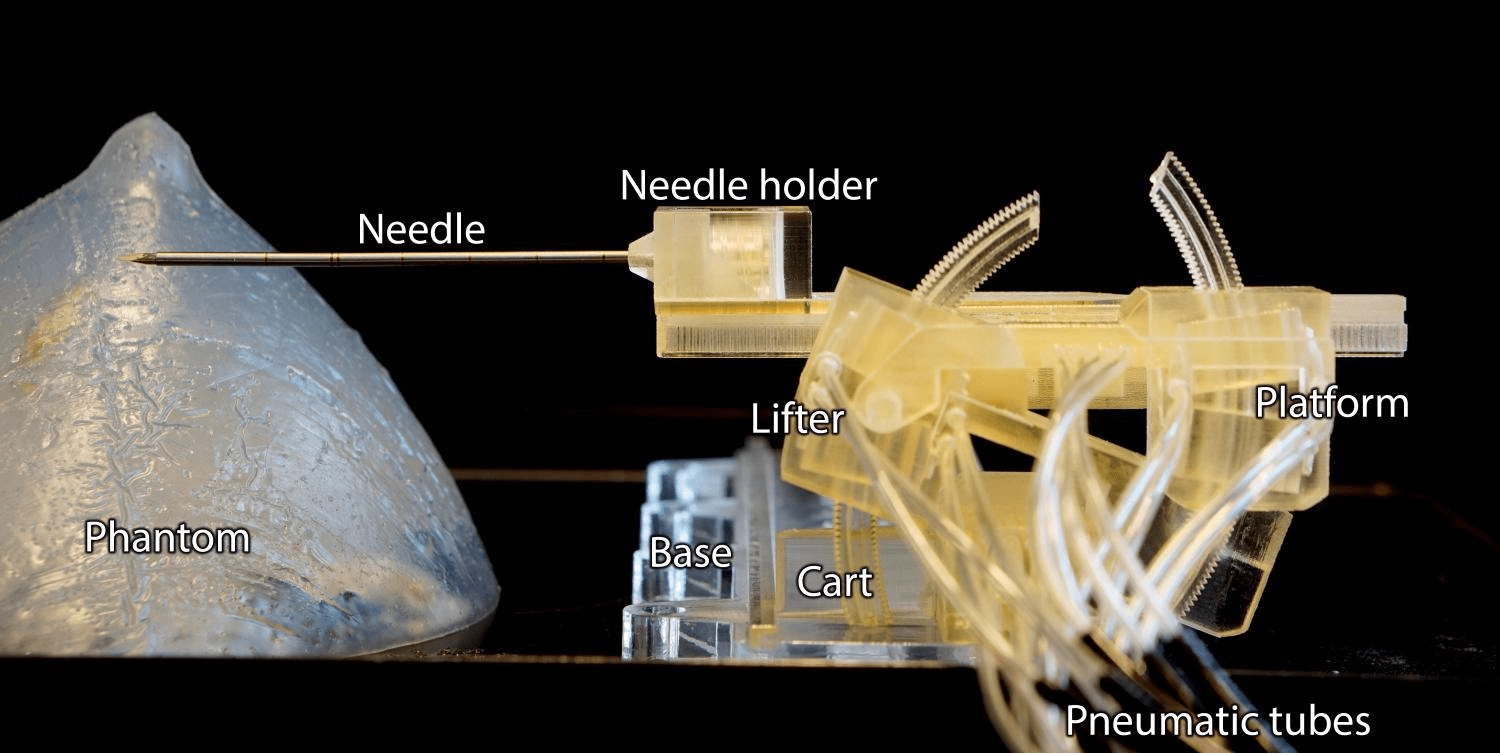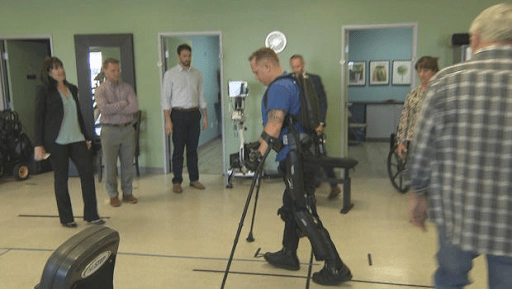

Robots and how healthcare providers and patients are using them
The umbrella term — “robotics” — can be applied to both humanoid robots that help children with autism improve their social skills and to the first FDA-approved “artificial” surgeon. Among the emerging technologies, cases of present and future applications of robotics in healthcare hold a very special place. Partially, due to the dark, mysterious aura of the threat to all things humans care for—their social connections and jobs—that surrounds various robots, and their, so as it seems, unavoidable integration with healthcare. Here, we’ll talk about different ways robots are (and will be) helping healthcare practitioners and patients.
Robotic intervention in medical procedures
There is, of course, Da Vinci. It’s FDA compliant artificial surgeon, developed by Intuitive. It provides a possibility of “minimally invasive surgery”. Four interactive robotic arms, console with 3D-imaging and remote control of above-mentioned hands allow surgeons to work with more precision and less exposure to accidental mistakes — before making a move, the robot runs dozens of security checks to see if nothing’s at risk.
Among the pros of technology, practitioners list the streamlined surgical procedures due to easier access to the organs where invasion is needed, more opportunities to move and lesser tremor-related issues. Also, surgeons sit.
Among the cons are, first and foremost, cost — and this is a case for many other robotic options in the industry. Plus, there are also security issues (eternal questions like — how safe is patient’s data?), design issues (a claustrophobic console) and, as it usually happens, lack of training. One of the last years’ NBC News articles on injuries and risks related to using the medical device interviewed Dr. Robert Poston from SYNY Downstate Medical Center, who, while admiring the technology, admitted he had only two hours of training before his first surgery with da Vinci assistance.

Another case of using robots for surgeries is Renaissance Guidance System, developed by an Israeli medical device company, Mazor Robotics. Being a guidance system, Mazor’s solution wasn’t invasive: it provided surgeons with guidance on how to improve the accuracy of spinal operation and minimize the scope of radiation for surgery and, therefore, the length of patients’ hospital stay and their recovery time, in general. Last year, Mazor Robotics was acquired by Medtronic. Later, the company launched Mazor X Stealth Edition robots that allowed not only recommendations on precision improvements, but also robotic navigation through the operation and customized procedure planning.

There are more examples of using robots to reduce risks and streamline surgical procedure (like the last year case of Cleveland Clinic and their performance of prostatectomy with the assistance of the robotic SP system).
Or little Stormram 4, a robot that is made from 3D-printed plastic and used to perform biopsy right inside of the MRI scanner. Developed by scientists at the University of Twente, Stormram 4 is still on the stage of trials—but it is already showing extremely high precision in detecting and sampling of a tissue that is needed for biopsy—and giving hope for better cancer detection.

All of them, as it occurs, — except for those who’re on the stage of trials, have similar challenges: a high cost and a rather long learning curve that demands physicians’ undivided focus for more than two hours.
Service robotics for hospital cleaning, delivery, disinfecting, etc.
In some sources, “service robotics” also includes robotic assistance in surgeries, but this article is not the case: we are talking about machines that disinfect rooms, deliver supplies—both medications and food for patients, and, generally, do what hospital staff previously did. We think such service robots, integrated into the hospital environment, are perfect for explaining why robots in healthcare are actually needed: do time-consuming work quickly and give nurses and doctors more time to connect to patients and perform clinical tasks.
For instance, TUG, developed by Aethon, can transport “almost anything, almost everywhere” — and, according to the company’s site, it reduces cost-per-delivery up to 80%. TUG safely fetches meds and tests, can bring lunch to patients and linen to nurses, secures lab supplies through biometric. Which is, by the way, resolve not only the nurses’ routine tasks (go there — get that — come back — repeat), but also improves the security of pharmaceutical supplies and reduces the chances of human error or fraud.
Moxi, a robot, developed by Diligent Robotics, is an assistant for nurses — and it handles 30% of their errand- and mundane-like tasks. Working in a team with people, Moxi helps nurses spend more time in meaningful interactions and reduces chances for them to appear on the verge of a nervous breakdown. Which is real.
Another example of service robotics is UVD Robot, developed by Blue Ocean Robotics that recently won the IERA Award. During 10 minutes of disinfection, UVD Robot kills 99.9% of all bacteria. Imagine this: according to Moris Miller, 300 Americans die every day from a hospital-acquired infection. Before robots, hospitals use Ultraviolet C (UVC) light for disinfection — and, while the method was effective against microbes, it was really tiresome from the angle of hospital workflow. For UV to work, the environment has to be shadowless, so for efficient disinfection of a room has to be empty. UVD robot radiates ultraviolet on the shorter distance than traditional UVC — and it’s moving around the room, so the shadowing is reduced, and more bacteria are killed.
Another robot, LightStrike, developed by Xenex, is aimed at disinfecting as well: also through ultraviolet light technology, but this time the robot fights C. auris pathogen.
The major challenge for autonomous robots is, of course, the fact they’re autonomous. (Except for their cost.) Sometimes they use sensors, sometimes — GPS, WiFi, or Bluetooth combined with beacons, combined with machine learning algorithms, etc — to orient in the environment, but the human-robots interactions remain slightly buggy. (Don’t let them step on you!) Engineers and product designers who develop such solutions must test very carefully — and provide the healthcare facility with very explanatory sets of training and instructions.
Social and collaborative robots
Imagine a world where people suffer from loneliness and robots help them get through this. That’s our world. Robot GenieConnect with an “Always by your side” motto is developed by Service Robotics to help people feel connected to the world and cared for. It remembers users’ preferences in content and provides them with it — or let them call people who share their interests. It reminds them to take their meds and helps in scheduling appointments. GenieConnect is oriented on elderly people and, along with fighting loneliness with a feel of companionship through voice activation, multimedia, and various chats, it also helps them against memory decline.
Meanwhile, there are clinical proofs that humanoid robots can help children with autism spectrum disorder (ASD). Facing difficulties with social interactions, traditional learning, expression of their emotions and recognizing the emotions of others, people with ASD often feel isolated. Games and learning with robots proved to increase communication responsiveness in children with ASD.
Michelle McFarland, co-developer of Milo, created by Robokinds, offers the following explanation: while people with autism often feel uncomfortable looking at human faces and tend to avoid eye-to-eye contact, interactions with robots who are — not human, so there’s no need to be anxious — help them get through it and learn the rules (and how to break them) of social situations. That, in combination with other people, might have been extremely overwhelming and stressful — but not with robots.
Telepresence robots are generally mobile screens that move through the facility if, for instance, patients need to ask some questions. With them, hospital workers expand their reach — and, while it’s not as accessible as telemedicine solution, telepresence robots can be pretty good for large hospitals — or for remote in-hospital consultation if a facility lacks the needed specialist like it’s done in Canadian North. Telepresence robots, right by the Black Mirror book of near-IoT-devices, have issues with privacy which are yet to be resolved.
Assistive robots, exoskeletons, and prosthetic
Reduction of cognitive decline isn’t an exceptional feature of GenieConnect. There is, for instance, the Catalia Health’s robot Mabu that is also targeted on the elderly people and people with chronic conditions to offer personalized health recommendations and care. Such solutions are developed to mimic the interaction between humans — but there’s another application in the patient care for robots: physical assistance for those who need it, due to a disability, an illness, or rehabilitation process.
For instance, there are robotic solutions for people with movement disorders: from chairs with exoskeletons that help people eat, drink, and hold things to exoskeletons that support people who can’t walk (like ReWalk’s solution), to robotic suits for people with paralyzing injuries.

Recently, scientists from Carnegie Mellon University and the University of Minnesota developed the first non-invasive brain-computer interface for people to control a robotic arm. Interface achieves neural control through electroencephalography (EEG) imaging: that, perspectively, reduces both the cost of the solution (implants are expensive) and additional risks of an infection. The team “decoded” neural signals using sensing and ML algorithms to connect an arm and a person. Despite the fact, there is still a lot of work ahead in “teaching” the interface to seamlessly recognize, interpret, and act on brain signals, scientists are hopeful.
Evaluating the challenges in healthcare robots
Robotic solutions are costly, but this is a question that will be mitigated when more of them will arise, when robots become common.
Considering the fact all robots that are used in clinical practice are FDA-approved, a major challenge we're seeing is a lack of training. Sometimes, it seems that dramatic music and the atmosphere of dire should appear not within the discussion of robots and how they will conquer the world, but when people who make a decision about physicians’ workflow and the use of equipment in healthcare institution make another decision that affects their workers’ reputation and their patients’ well-being. (See the story of the DaVinci fellow). Why is it happening? Due to a traditional system that is used to see its employees operate in rush and stress, that is used to fee-for-service and that cares about being wealthy and cool. And, maybe, due to a lack of awareness about the complexity of robotics solutions and of mandatory training and environment for it.
Some of the latter is in the hands of the tech companies.
Tell us about your project
Fill out the form or contact us

Tell us about your project
Thank you
Your submission is received and we will contact you soon
Follow us
